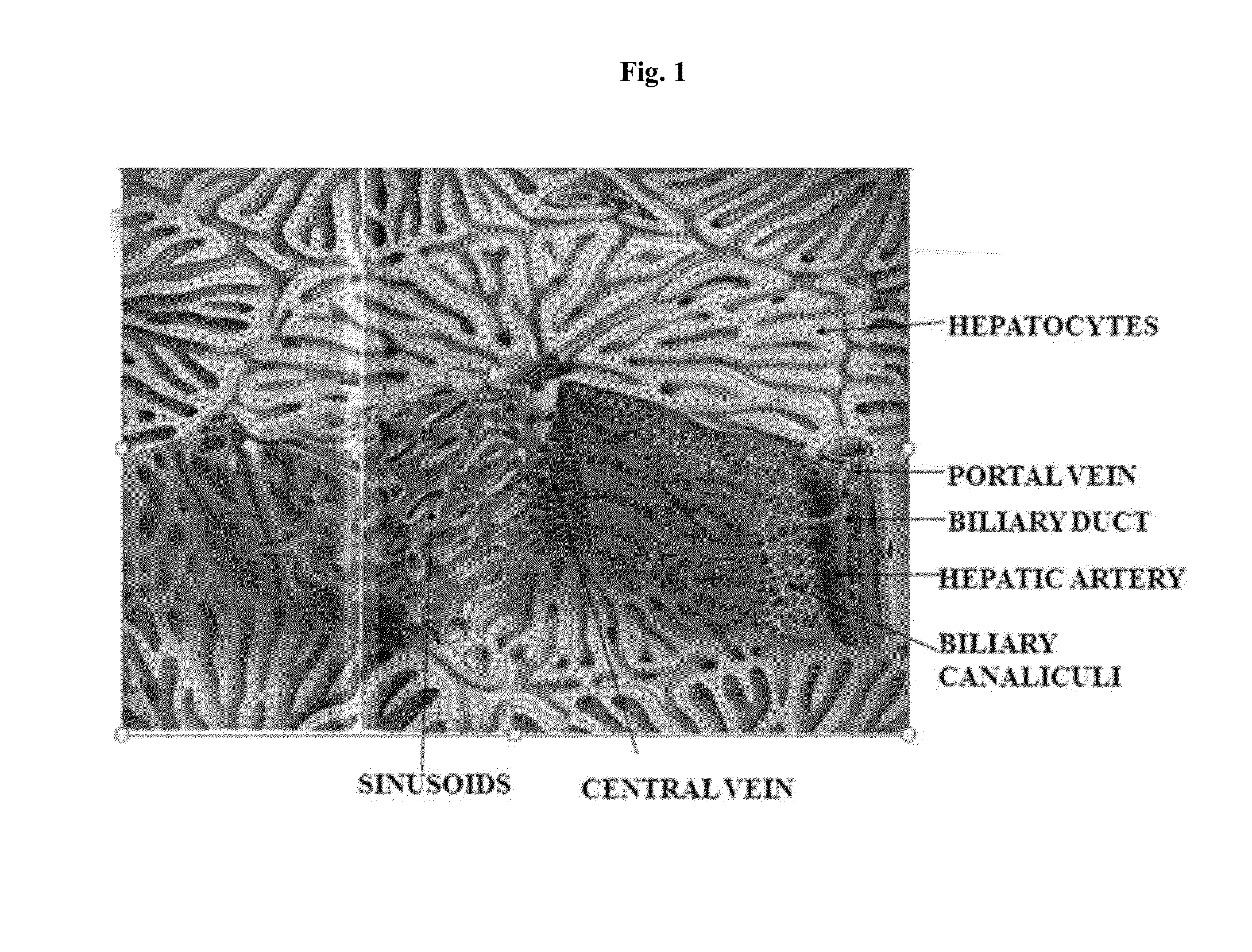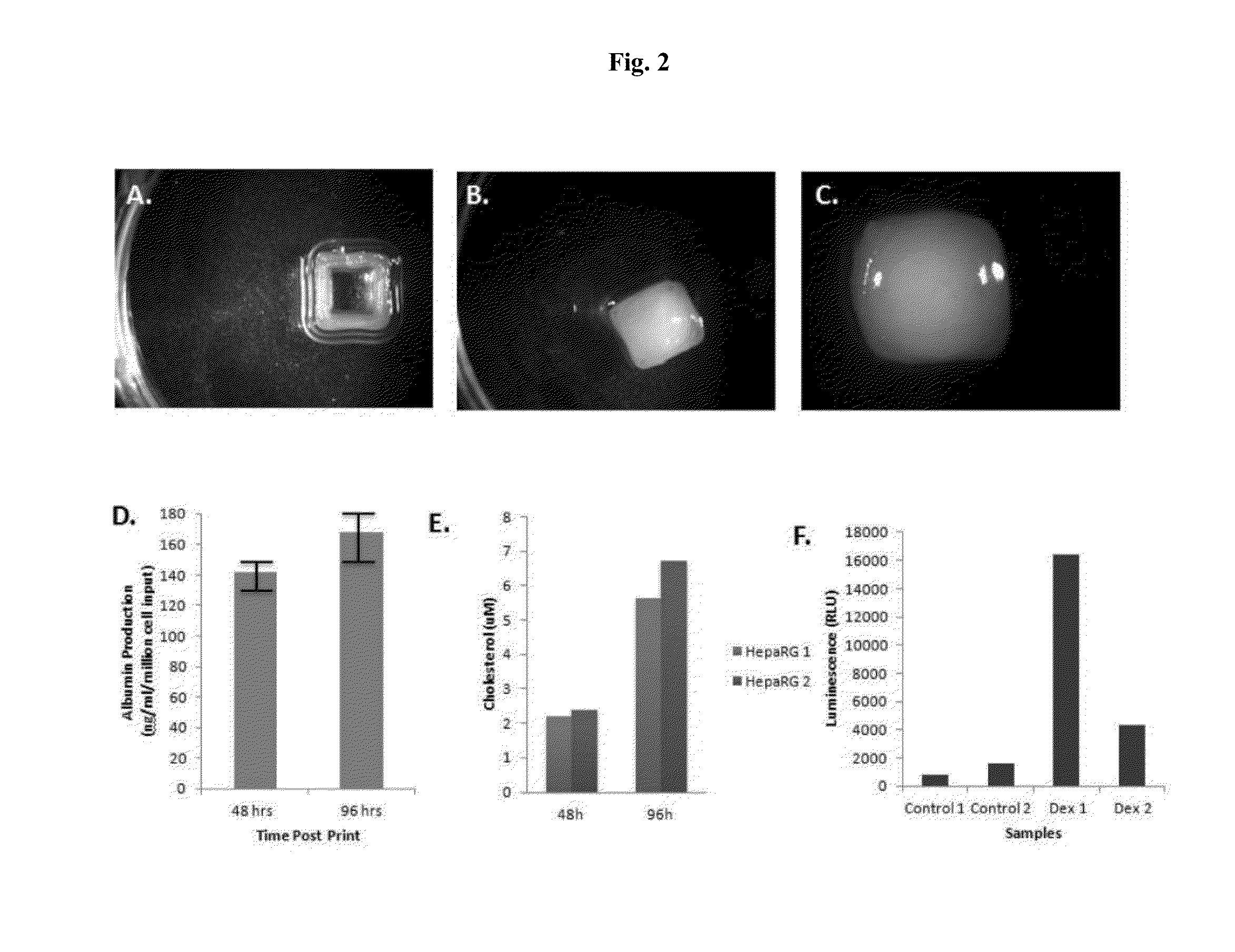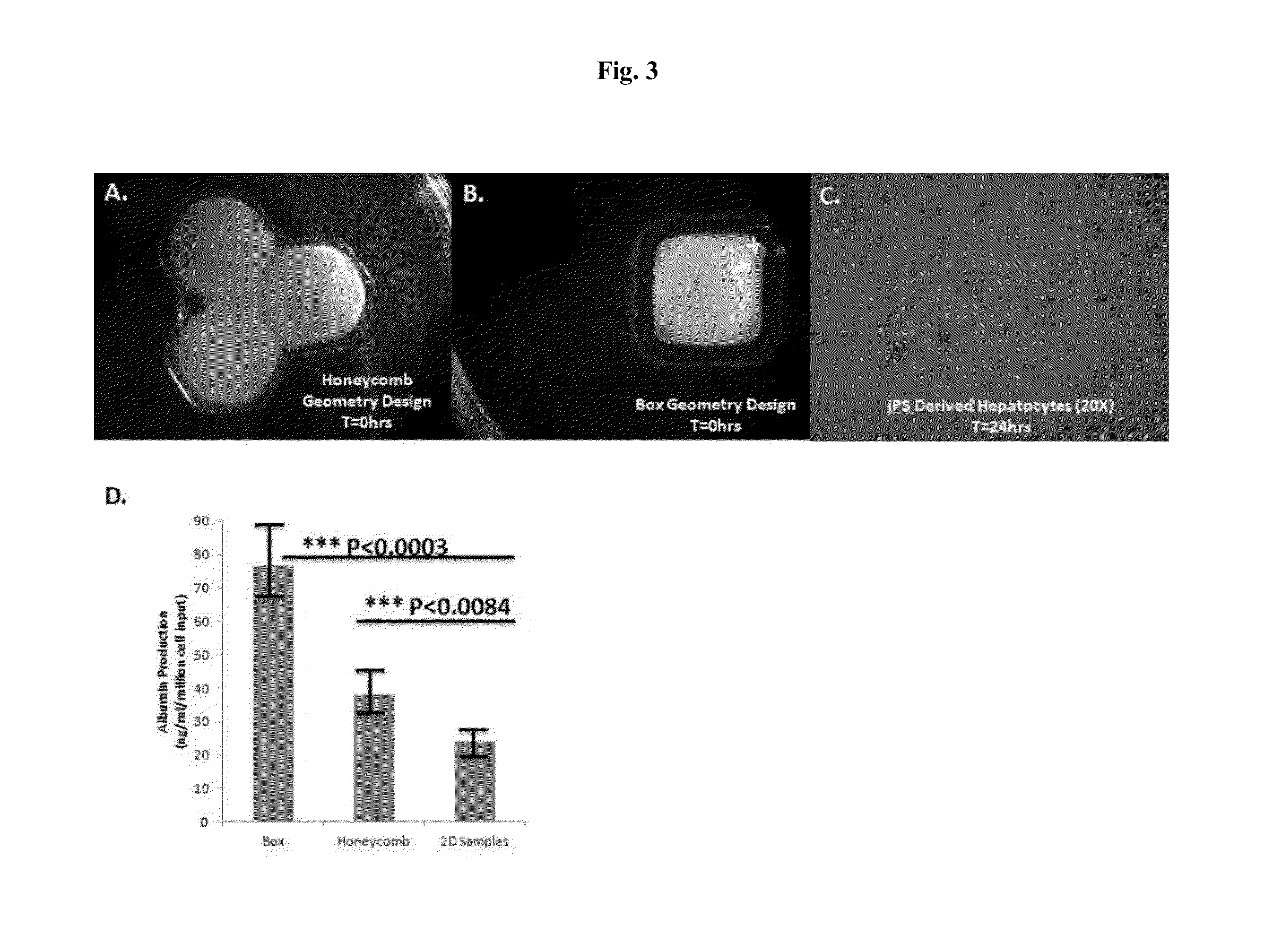Engineered liver tissues, arrays thereof, and methods of making the same
- Summary
- Abstract
- Description
- Claims
- Application Information
AI Technical Summary
Benefits of technology
Problems solved by technology
Method used
Image
Examples
example 1
Liver Tissue Bioprinted Using Continuous Deposition and Tessellated Functional Unit Structure
[0203]Engineered liver tissue was bioprinted utilizing a NovoGen MMX Bioprinter™ (Organovo, Inc., San Diego, Calif.) using a continuous deposition mechanism. The three-dimensional structure of the liver tissue was based on a repeating functional unit, in this case, a hexagon. The bio-ink was composed of hepatic stellate cells and endothelial cells encapsulated in an extrusion compound (surfactant polyol—PF-127).
[0204]Preparation of 30% PF-127
[0205]A 30% PF-127 solution (w / w) was made using PBS. PF-127 powder was mixed with chilled PBS using a magnetic stir plate maintained at 4° C. Complete dissolution occurred in approximately 48 hours.
[0206]Cell Preparation and Bioprinting
[0207]A cell suspension comprised of 82% stellate cells (SC) and 18% human aortic endothelial cells (HAEC) and human adult dermal fibroblasts (HDFa) was separated into 15 mL tubes in order to achieve three cell concentrat...
example 2
Forced Layering
[0212]Cell populations (homogeneous or heterogeneous) were prepared for bioprinting as either cylindrical bio-ink or as a cell suspension in Pluronic F-127 (Lutrol, BASF). Briefly, for preparation of bio-ink, cells were liberated from standard tissue culture plastic using either recombinant human trypsin (75 μg / mL, Roche) or 0.05% trypsin (Invitrogen). Following enzyme liberation, cells were washed, collected, counted and combined at desired ratios (i.e., 50:50 hepatic stellate cell (hSC):endothelial cell (EC)) and pelleted by centrifugation. Supernatant was then removed from the cell pellet and the cell mixture was aspirated into a glass microcapillary of desired diameter, typically 500 μm or 250 μm, internal diameter. This cylindrical cell preparation was then extruded into a mold, generated from non cell-adherent hydrogel material with channels for bio-ink maturation. The resulting bio-ink cylinders were then cultured in complete cell culture media for an empirical...
example 3
Multi-Well Plates
[0219]Cell populations (homogeneous or heterogeneous) were prepared for bioprinting using a variety of bio-ink formats, including cylindrical bio-ink aggregates, suspensions of cellular aggregates, or cell suspensions / pastes, optionally containing extrusion compounds. Briefly, for preparation of cylindrical bio-ink, cells were liberated from standard tissue culture plastic using either recombinant human trypsin (75 μg / mL, Roche) or 0.05% trypsin (Invitrogen). Following enzyme liberation, cells were washed, collected, counted, and combined at desired ratios (i.e., 50:50 hepatic stellate cell (hSC):endothelial cell (EC)) and pelleted by centrifugation. Supernatant was then removed from the cell pellet and the cell mixture was aspirated into a glass microcapillary of desired diameter, typically 500 μm or 250 um, internal diameter. This cylindrical cell preparation was then extruded into a mold, generated from non cell-adherent hydrogel material with channels for bio-in...
PUM
 Login to View More
Login to View More Abstract
Description
Claims
Application Information
 Login to View More
Login to View More - R&D
- Intellectual Property
- Life Sciences
- Materials
- Tech Scout
- Unparalleled Data Quality
- Higher Quality Content
- 60% Fewer Hallucinations
Browse by: Latest US Patents, China's latest patents, Technical Efficacy Thesaurus, Application Domain, Technology Topic, Popular Technical Reports.
© 2025 PatSnap. All rights reserved.Legal|Privacy policy|Modern Slavery Act Transparency Statement|Sitemap|About US| Contact US: help@patsnap.com



